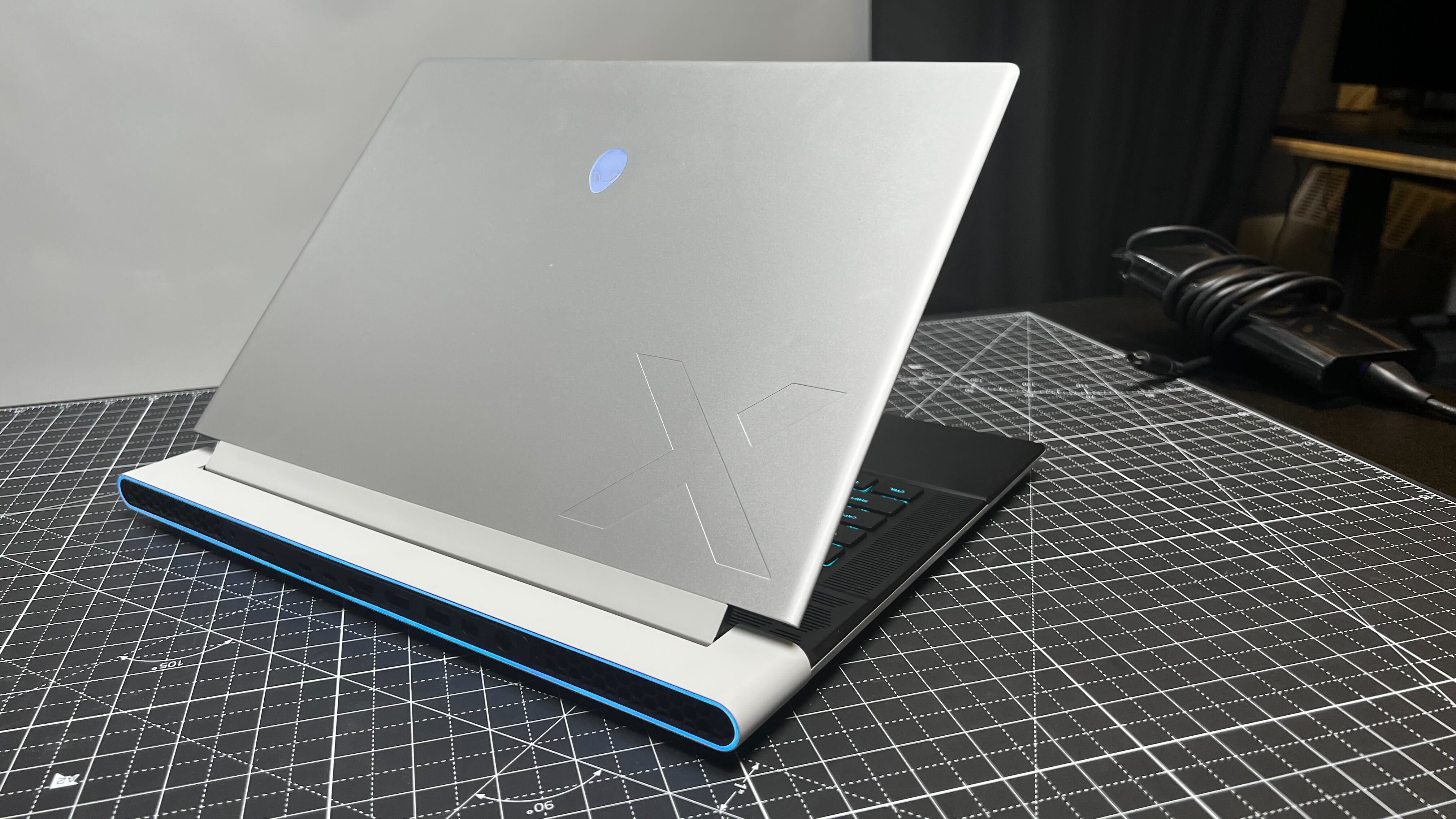
When Alienware announced its new X-series of thin luxury gaming notebooks at the beginning of the year, I was excited to see it take a stab at essentially a version of a gaming MacBook, something Razer's been doing with its Blade laptops for a while now.
With the rise of 16-inch gaming laptops, we are in uncharted territory, so it's exciting to mess with the Alienware x16 and see how it stacks up against some stiff competition.
Powering this system is an Intel Core i9 13900HK and an Nvidia GeForce RTX 4080 supported with 32GB of LPDDR5 RAM and 1TB NVMe SSD for memory and storage. As configured, you're looking at spending $2,949. Systems start at $2,049, and you have a wide range of configurations from your choice of RTX 40-series cards, from the RTX 4050 to the RTX 4090.
While expensive, I was surprised that the $2,949 price point is on par with its similarly specced competitors like the ASUS ROG Strix Scar 16 for $2,900 and the Lenovo Legion Pro 7i for $2,750. Knowing Alienware and how it likes to price its products, I expected this to cost around $3,300. Still, I was happy to see the company get more competitive, especially with its premium laptops and seemingly ditching that 'Alienware Tax' we often joke about.
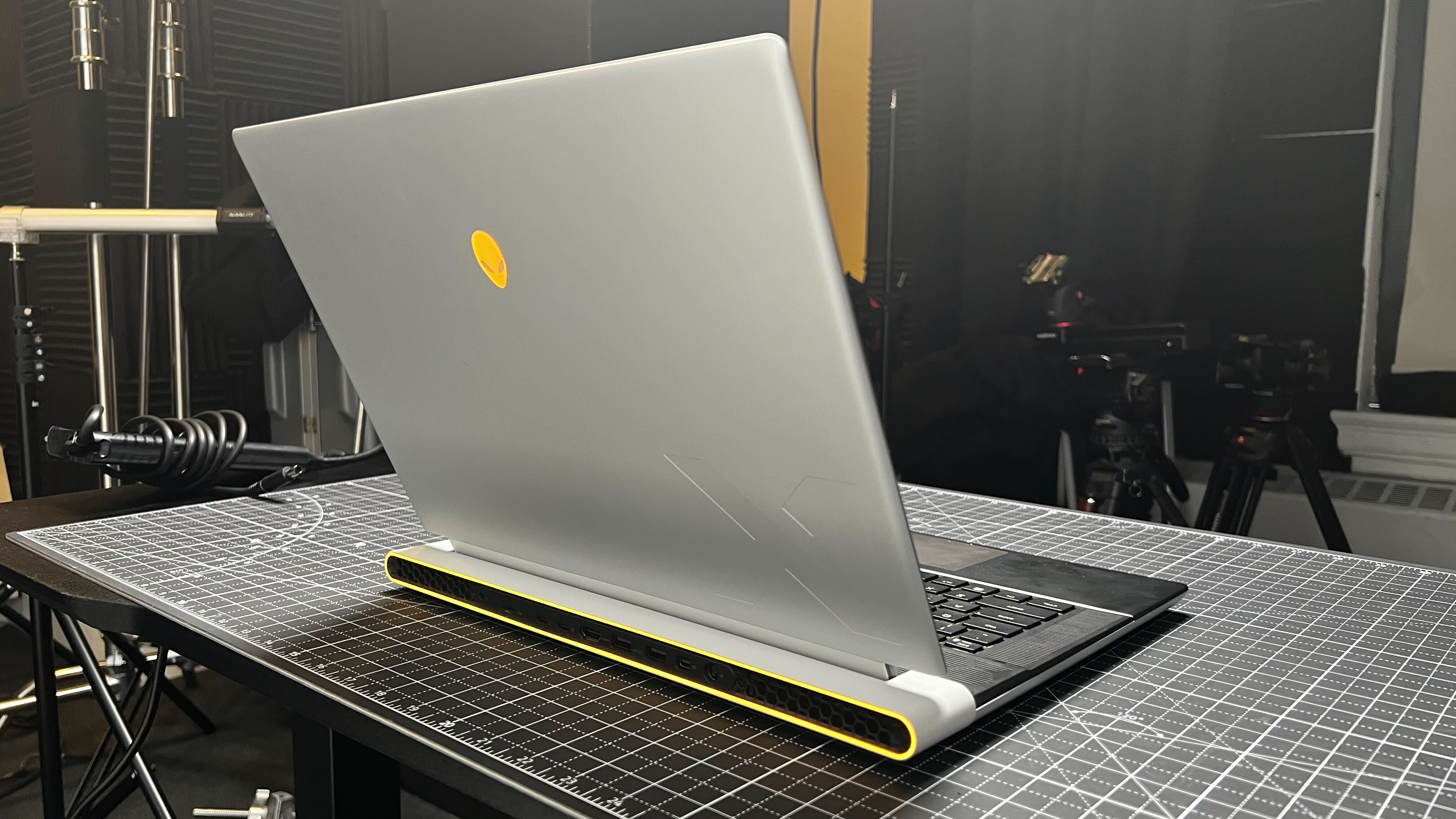
CPU: Intel Core i9 13900HK
Graphics: Nvidia GeForce RTX 4080
RAM: 32GB LPDDR5 6000MHz
Display: 16-inch, QHD+ (2560 x 1600) 240Hz
Storage: 1TB M.2 PCIe NVMe SSD
Ports/Connectivity: 1x 3.5mm Combo Audio Jack
1x HDMI 2.1, 2x USB 3.2 Gen 2 Type-C for display/power delivery, 2x USB 3.2 Gen 2 Type-A, 1x Thunderbolt 4 DisplayPort with G-Sync, MicroSD Card slot
Weight: 2.72kg / 6lbs
Size: 14.36 x 11.41 x .7 inches
MSRP: $2,949
The first thing you'll notice is the slick design of the Alienware X16. Alienware calls this its Legend 3.0 design with a lot of aluminum on its thin, light chassis. How thin and light? About 0.7 inches thin and only 6 pounds. It's a more subdued flashiness that I like. So you're getting workstation power without dealing with the workstation size.
Regarding size, hats off to Alienware for shrinking its power supply. There's nothing more I hate than lugging around a gaming laptop with a power brick that's the size of a, you know, actual brick.
One design quirk I'm still getting used to is that the headphone jack (along with all the other ports) is at the back of the system, which took a little getting used to. Maybe I'm just a headphone jack traditionalist, but I get the idea of relegating all those messy cables out of sight.
Sixteen inches is probably the sweet spot for many people looking for a gaming laptop these days. It's still a bigger screen than the 14 or 15-inch but still easier to travel than your 17 and 18-inch gaming monsters.
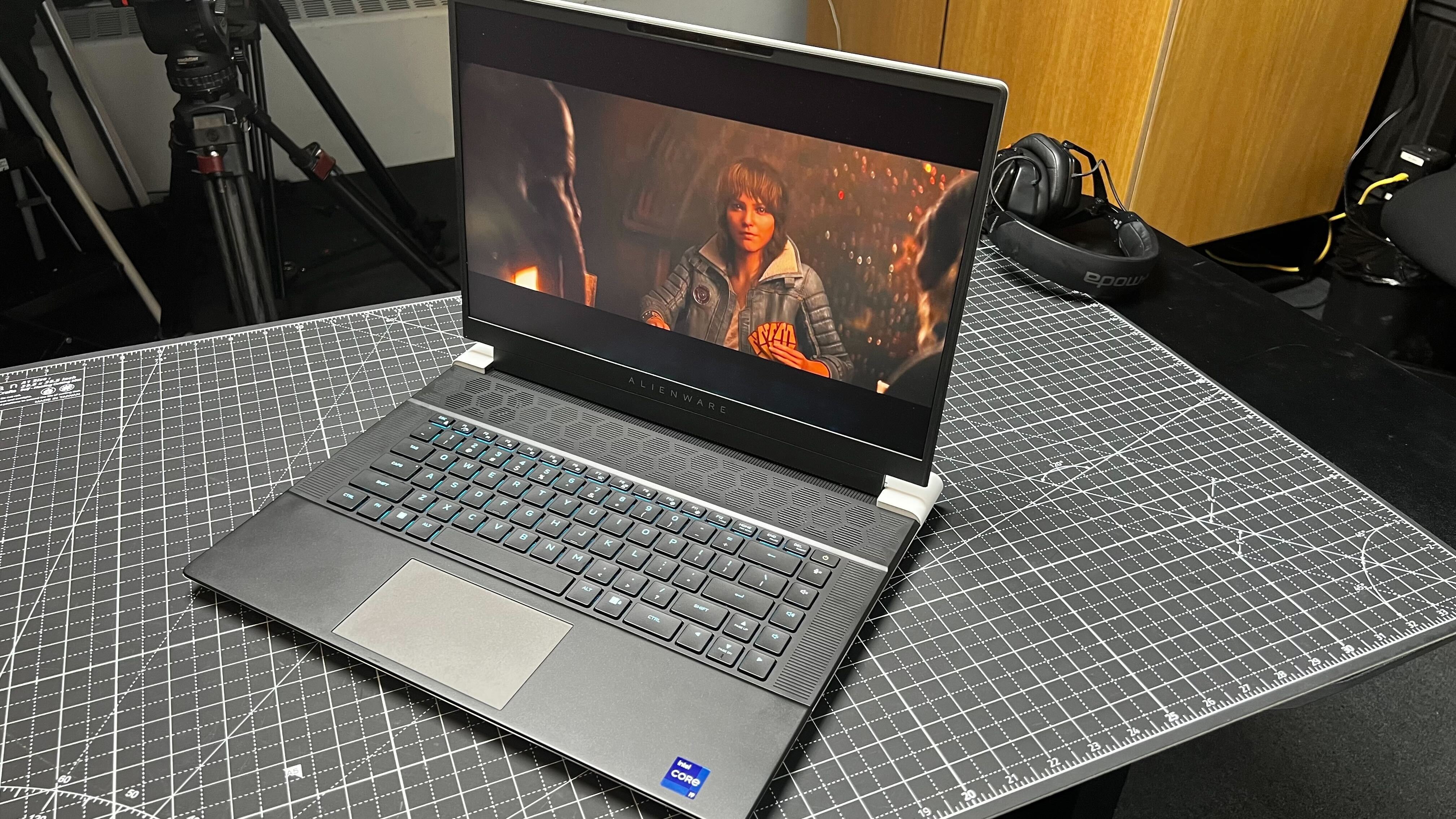
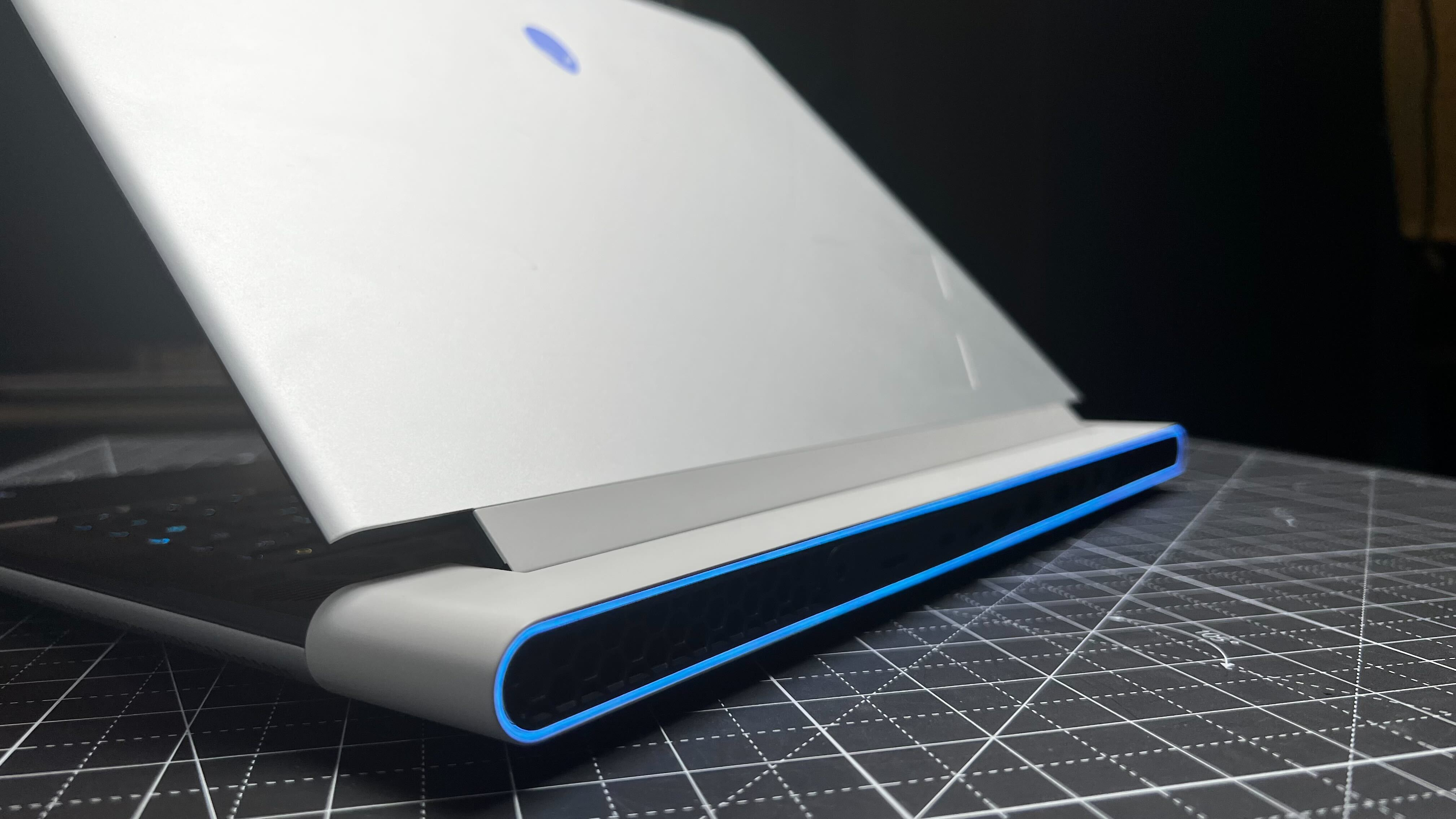
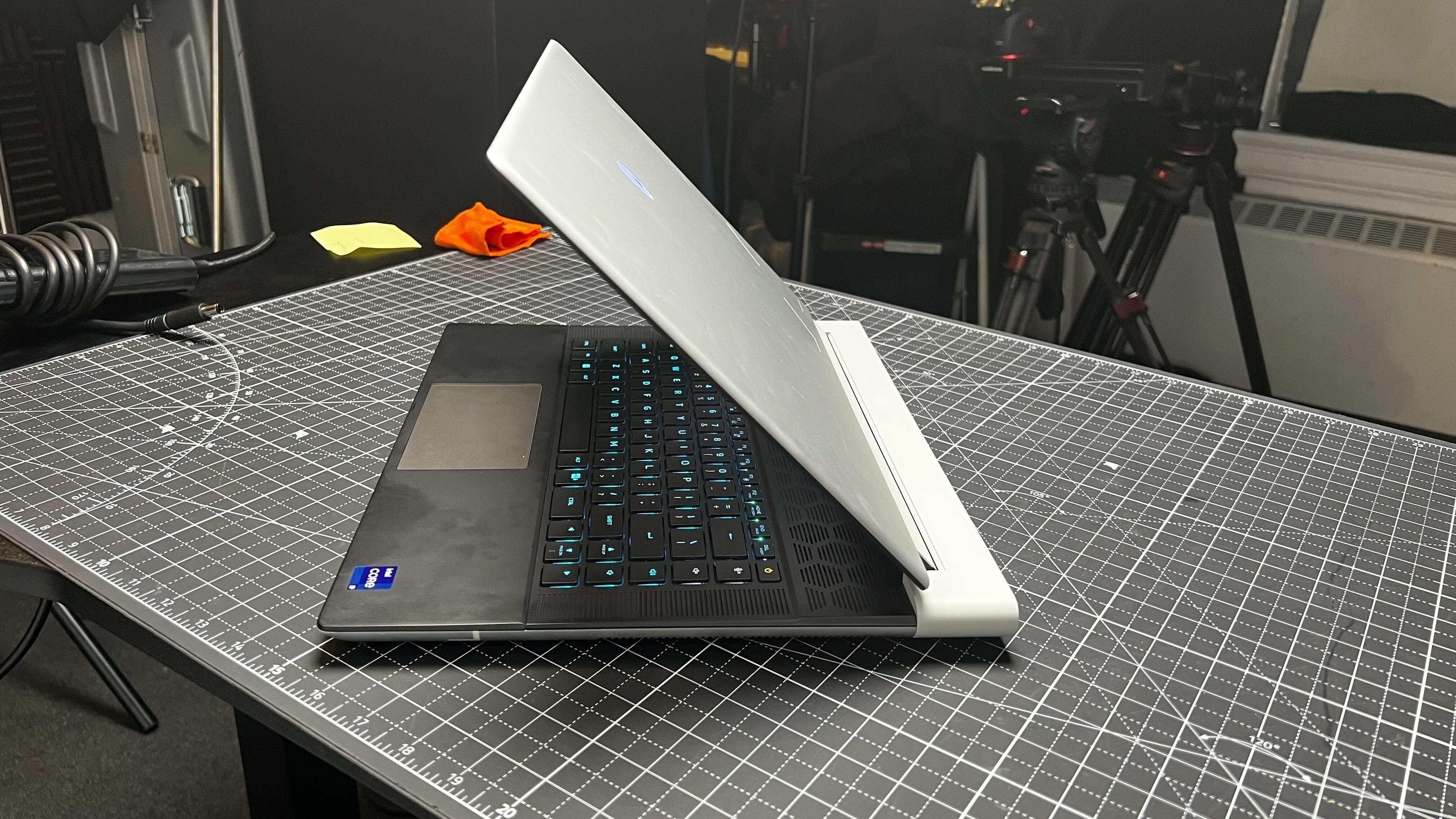

You still have RGB on the mousepad, keyboard, Alienhead logo on the lid, and of course, the "stadium" lighting ring in the back of the laptop. There are over 100 micro-LEDs that really make the colors pop. So if you were concerned that the redesign would make the new X-series laptops feel less like Alienware, you've got nothing to worry about. You can turn all that stuff off, but if you're buying Alienware, you're bought into all the razzle-dazzle.
The display is a speedy 240Hz QHD+ display that's both reasonably bright at 300 nits and vibrant. I wasn't initially a massive fan of the current trend of these new 16:10 gaming laptops. But the aspect ratio grew on me, and working on non-16:10 laptops feels odd now, especially from a productivity standpoint, and feels like a natural evolution. The aspect ratio gives you a little more screen real estate without giving you more size, which is nice.
And if you're nearly $3000 for a laptop, chances are you're using this as a thin workstation and gaming device. Why not make sure you're screen benefits both aspects of your life?

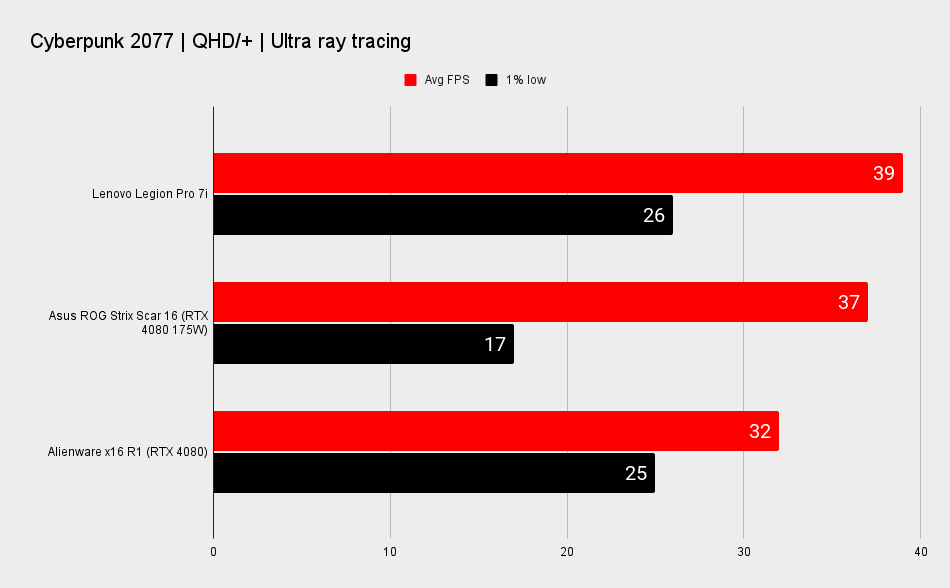
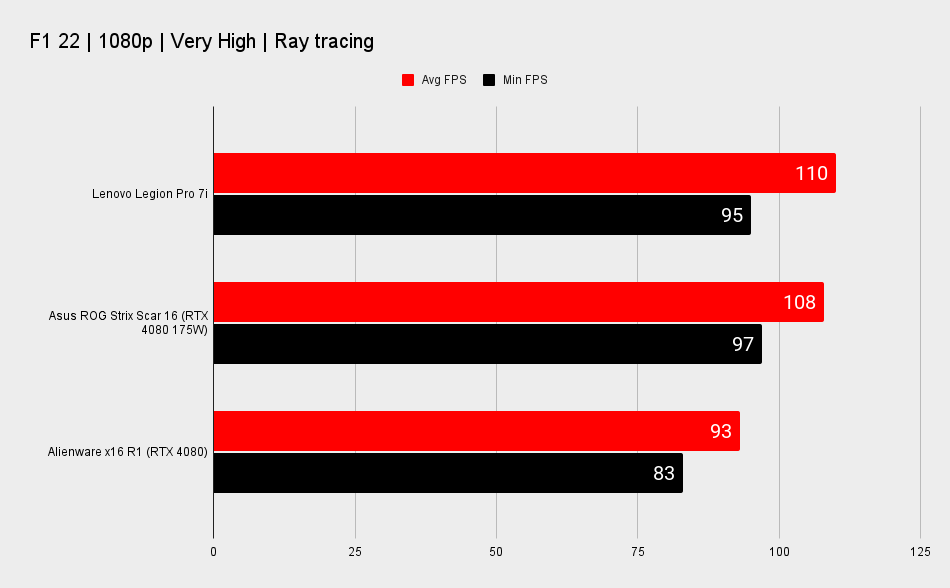
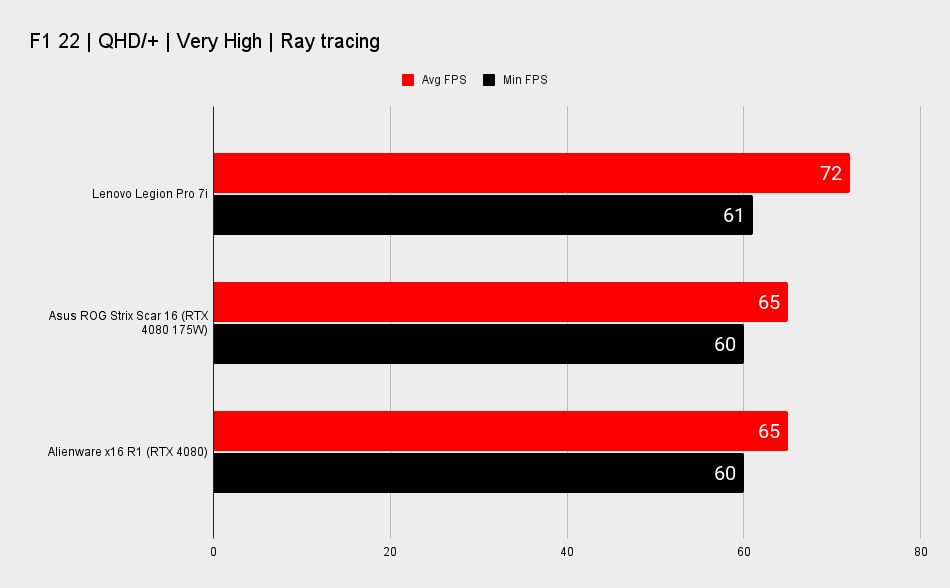
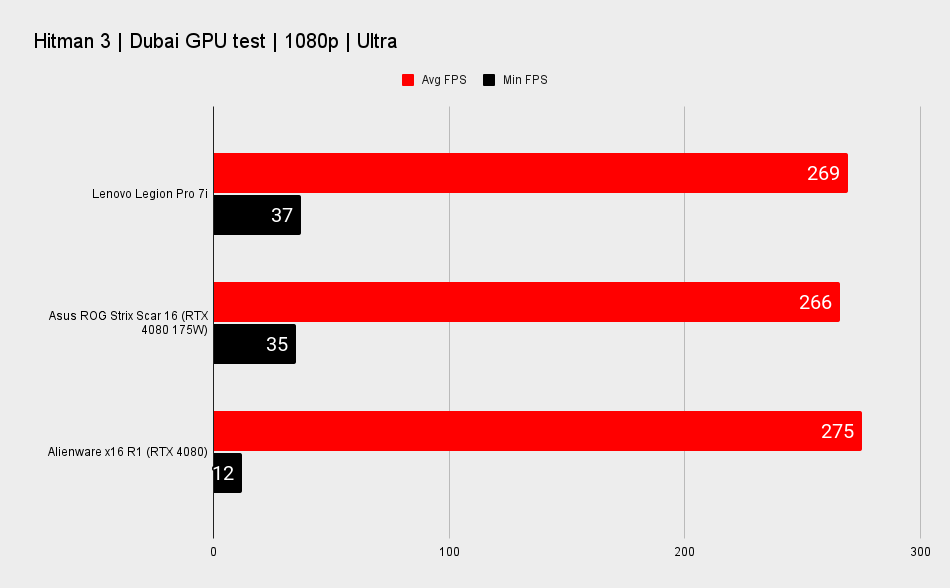
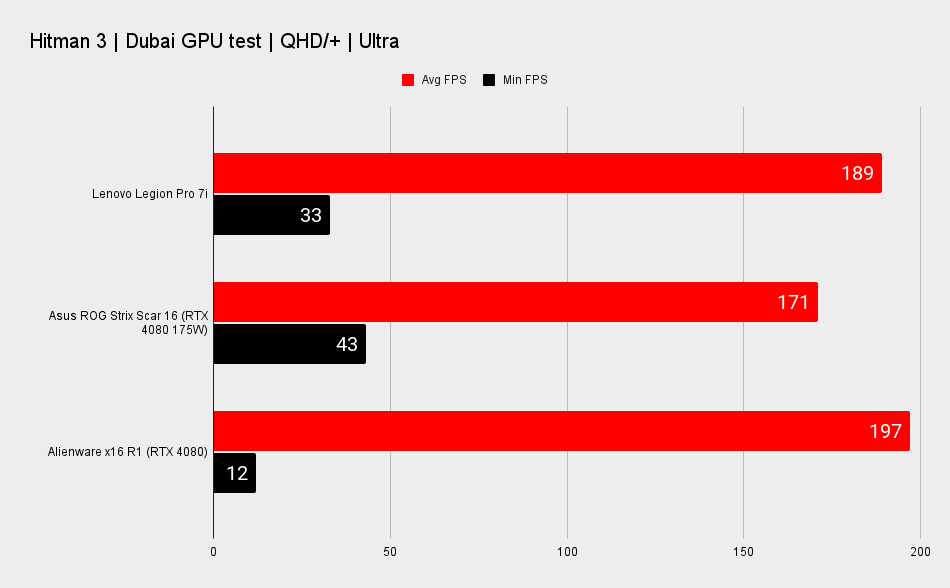
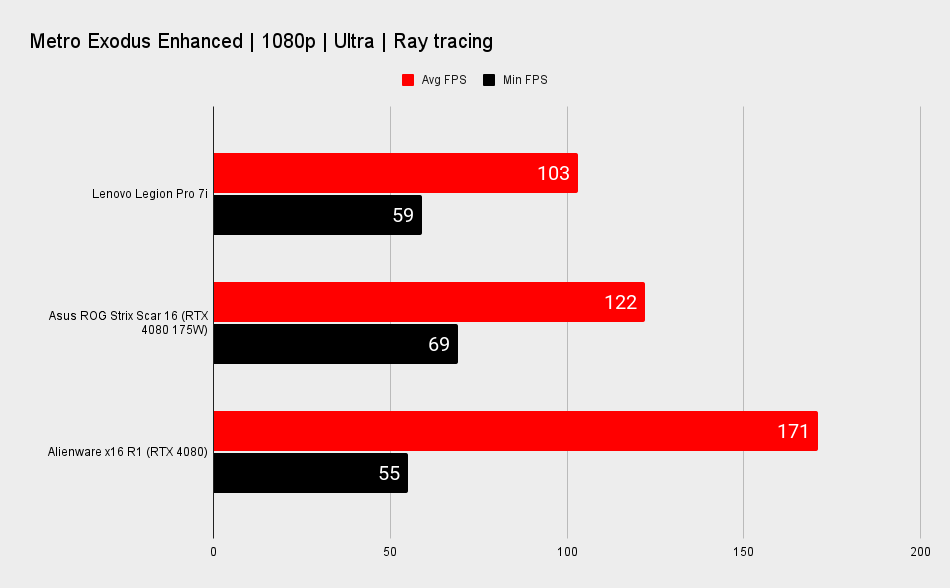
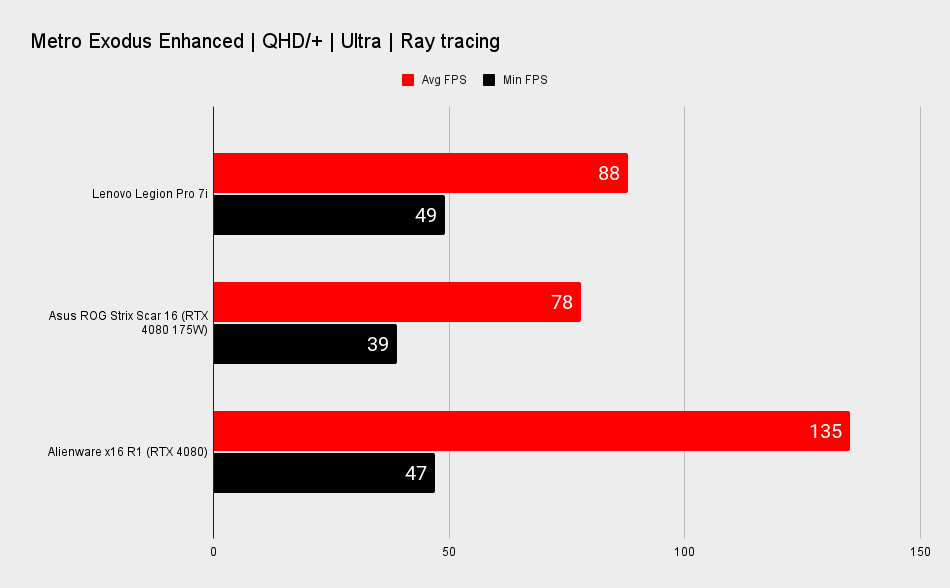
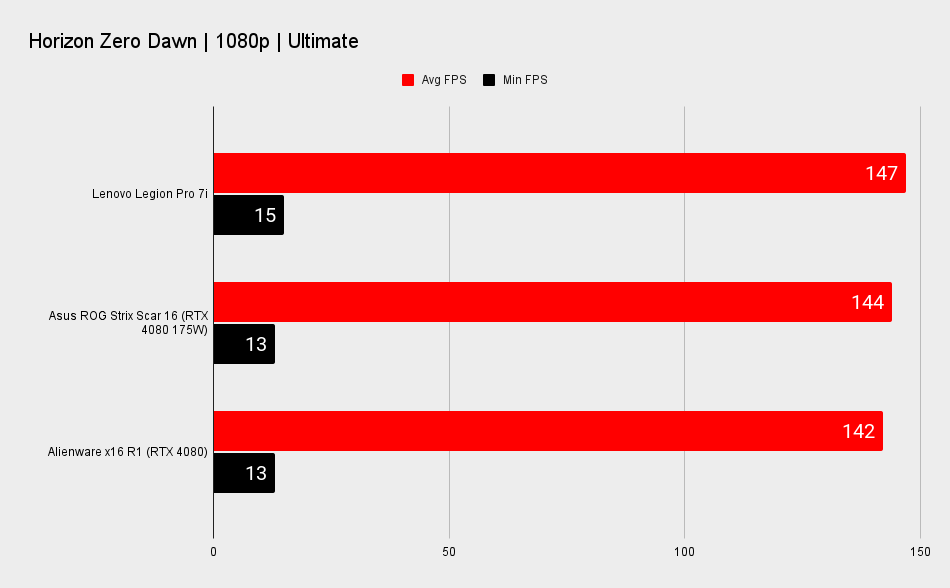
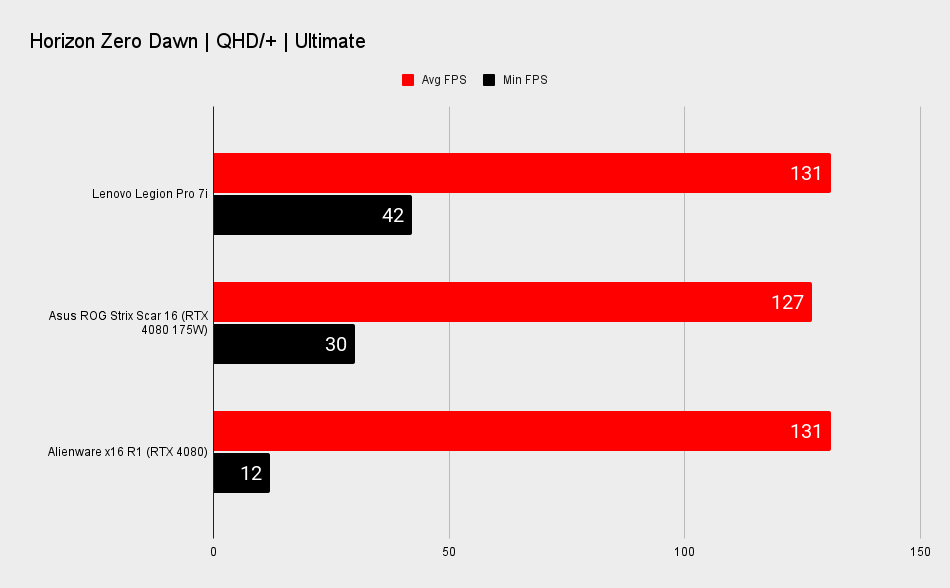
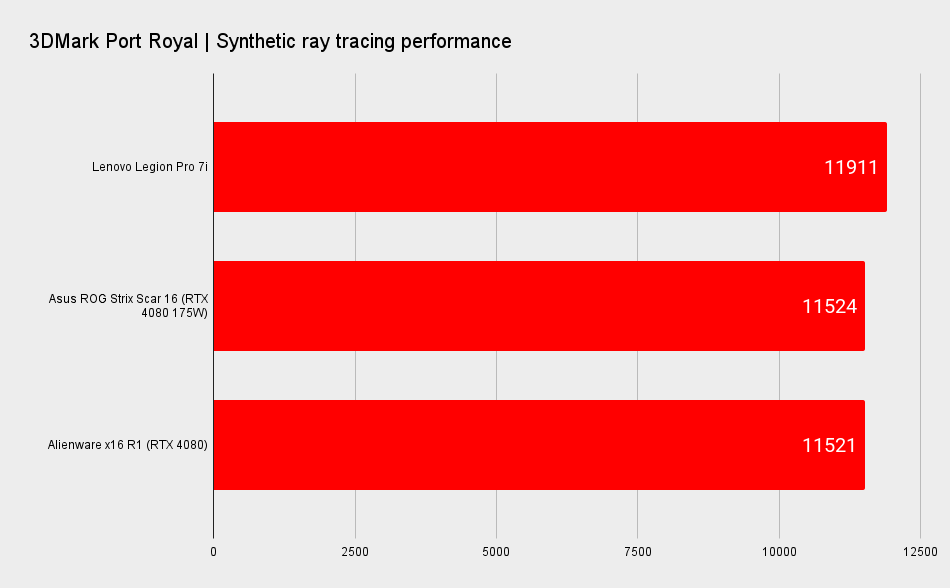

I really like how the display looks. I've been playing a lot of Diablo 4 and Fortnite, and both have been buttery-smooth experiences with fantastic color accuracy. My only slight with the screen is that it seemed dimmer than the advertised 300 nits peak brightness.
Another thing I like about the X16 is that Alienware could still fit a webcam to the top of the display. I hate when other laptop makers omit a camera or worse put it in the lower center hinge. I rather not have a camera than show up to a meeting with one aimed straight up my nose. It's a 1080p camera that works well enough that you don't need to consider picking up a webcam. The same can also be said about the microphone, though if you're chatting with teammates, it's still best to nab yourself a gaming headset.
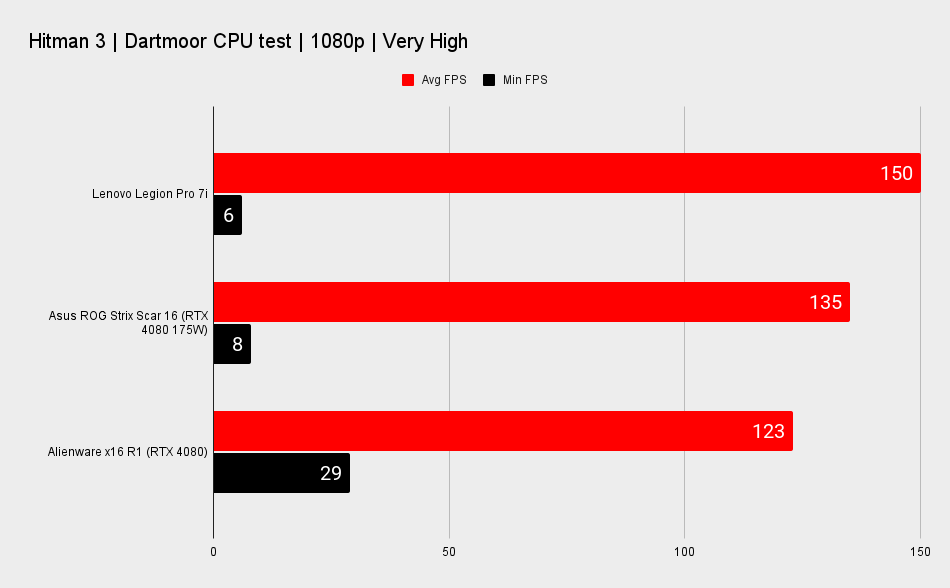
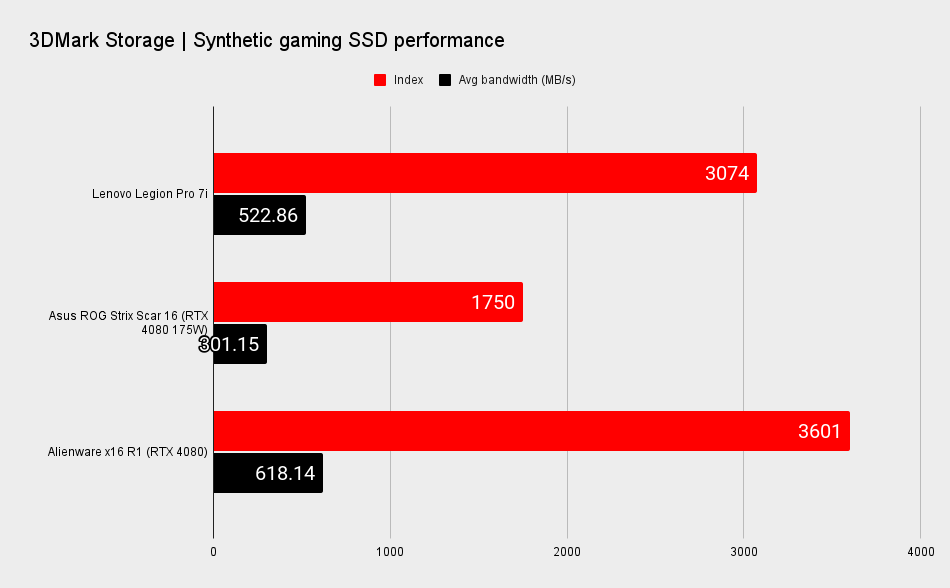
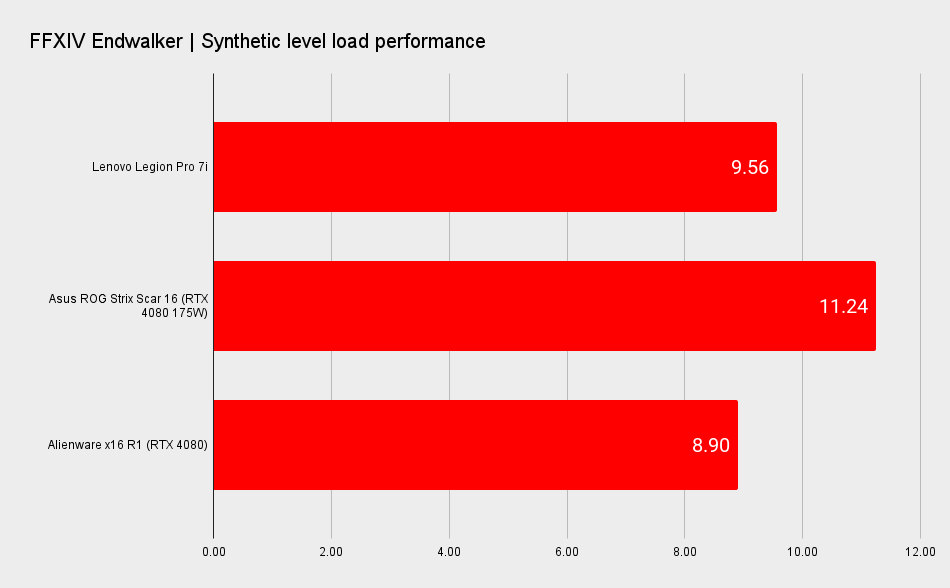

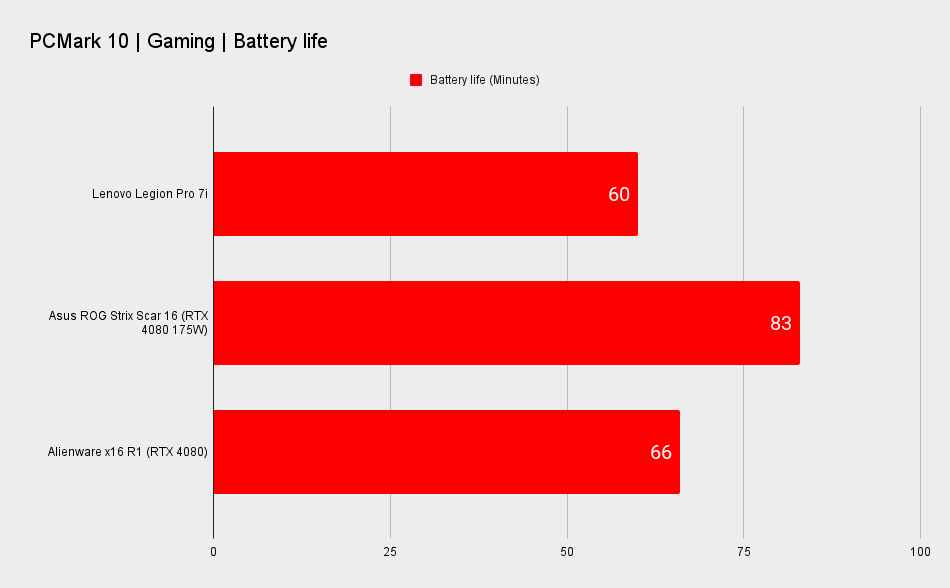
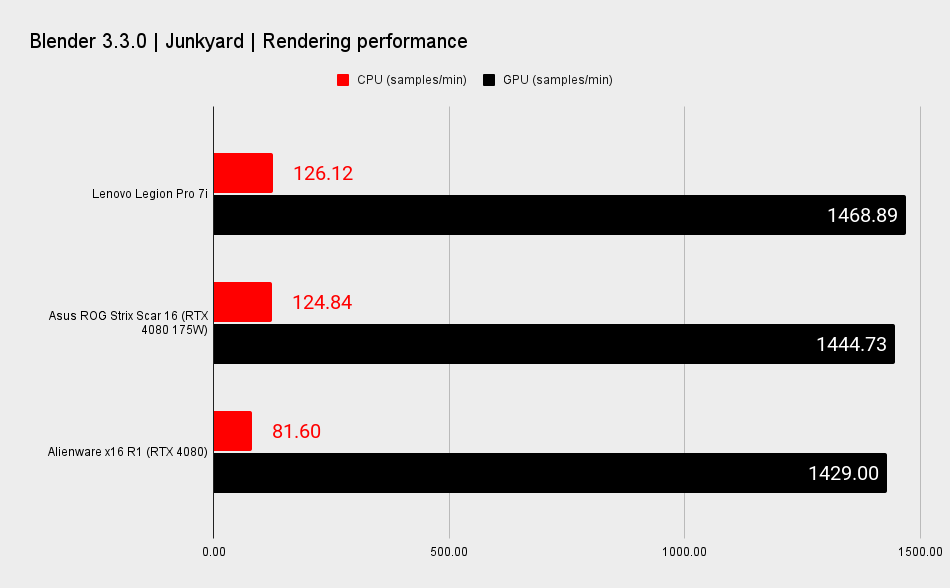
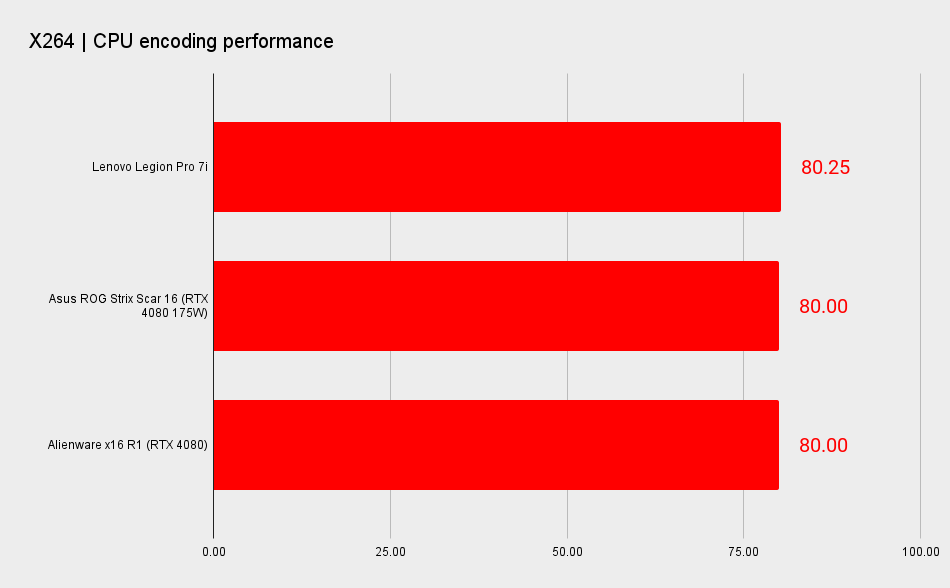
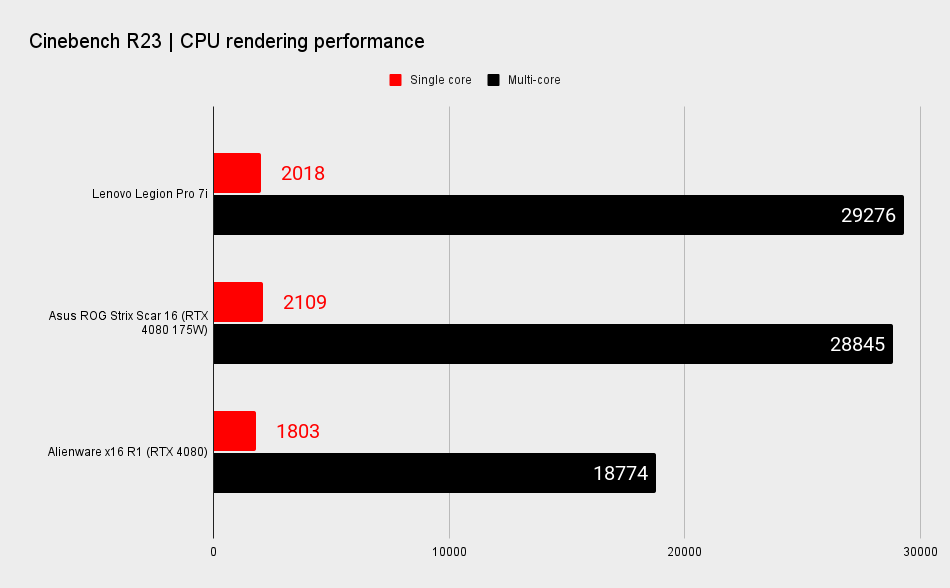
Sadly, where the X16 stumbles isn't at all in its design but in performance. The Intel Core i9 13900HK inside of the Alienware X16 lags behind the Strix Scar 16's i9 13980HX and Legion Pro i7's i9 13900HX in almost every CPU performance category in both gaming and productivity. A shame since the 13900HK is the only Intel i9 CPU to choose from for the X16.
When comparing GPU performance between the three, the Alienware also found itself in last place at both 1080p and 1440p resolutions in much of our synthetic testing. To be fair, on the gaming benchmarks, it still found itself in third place except in Hitman: World of Assassination and Metro Exodus Enhanced, where it posted some impressive triple-digit framerates.
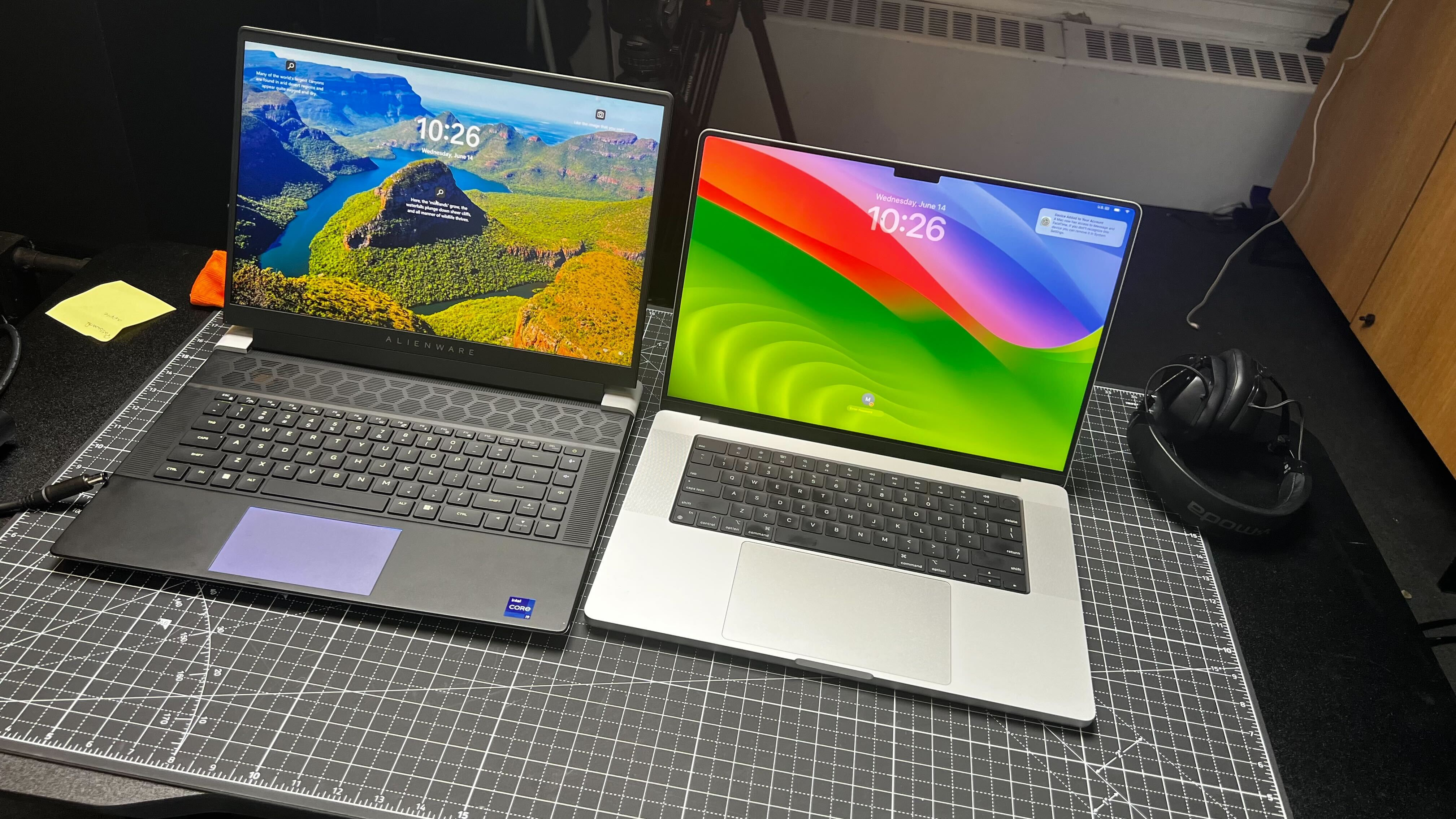
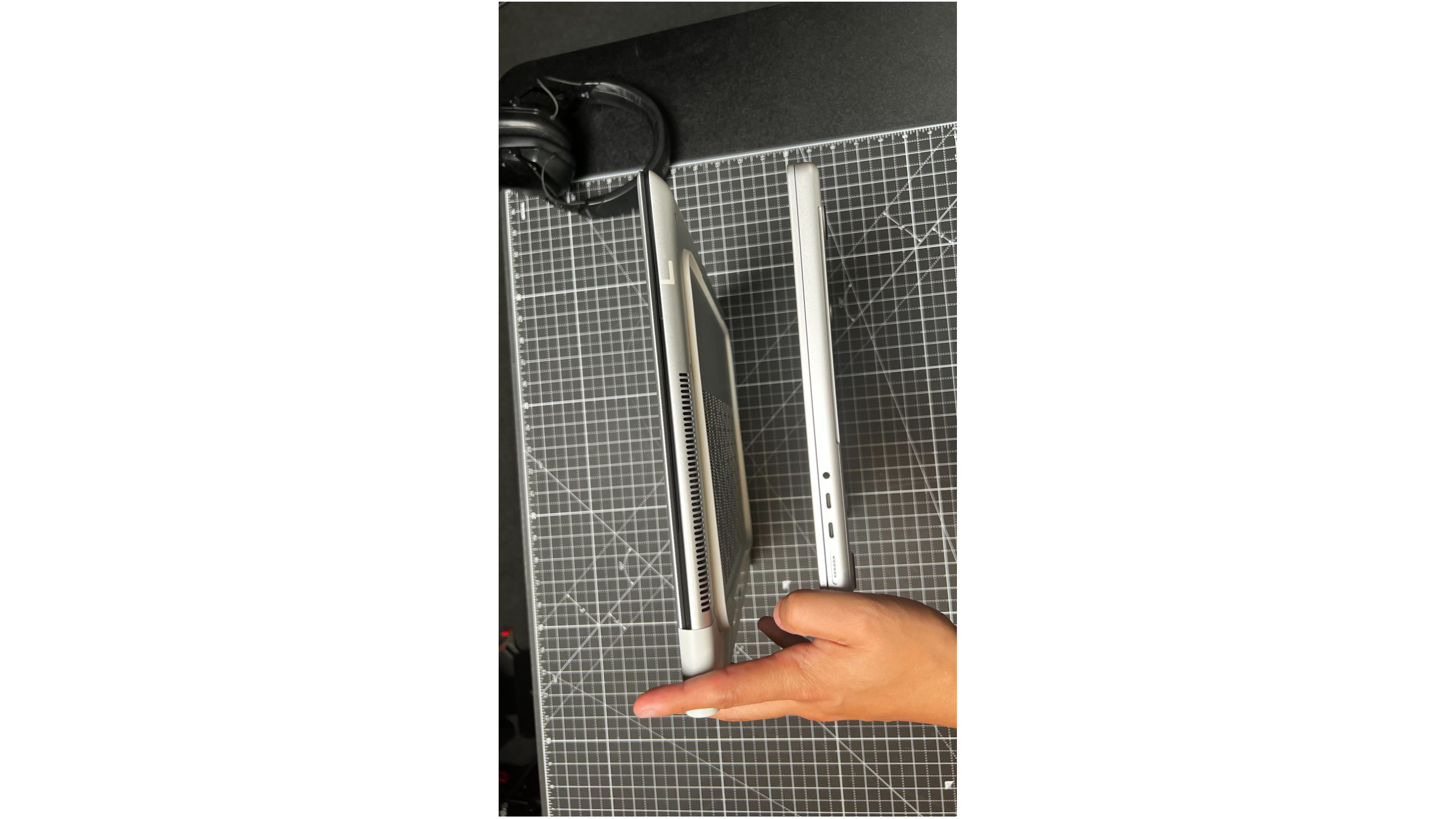
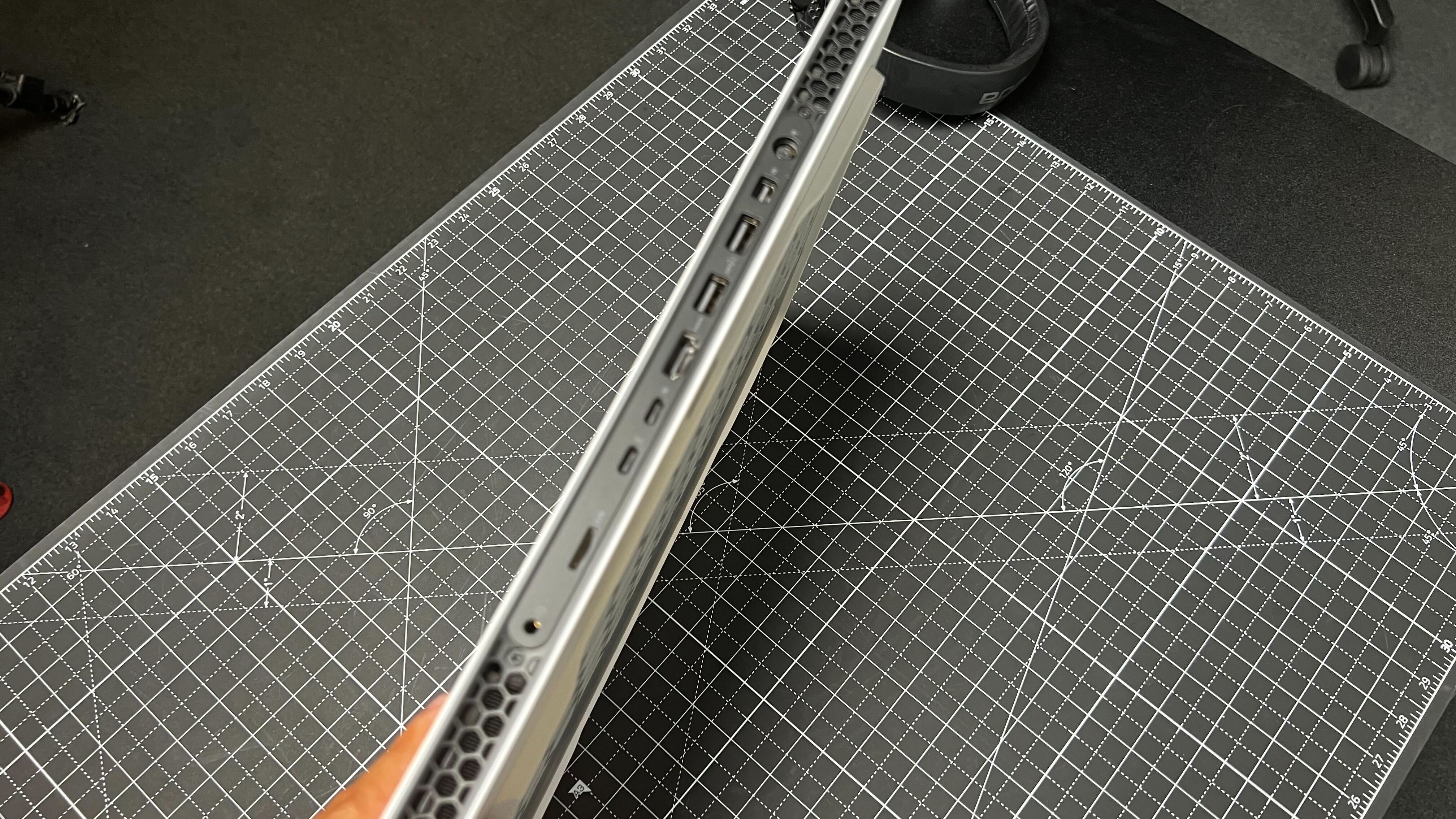
Of course, none of this was using Nvidia's DLSS 3 or any of that wild Frame Generation magic that significantly boosts frame rates to many games. For example, in Cyberpunk 2077, which got about 51 fps under the Raytracing Ultra preset, hit around 132 fps with DLSS cranked up and Frame Generation turned on. Honestly, I don't know why you would play any DLSS 3-compatible game without it.
But this laptop is disappointing because, at nearly $3,000, you're shooting for performance, and knowing you can get that on a system that's a few hundred dollars cheaper, you can't help but think you're paying for style than you are substance.
The aspect ratio gives you a little more screen real estate without giving you more size, which is nice.
✅ A stylish thin gaming notebook: Alienware really knocked it out of the park with the X16's design. It's slim, sleek, and has really nice-looking lighting effects.
✅ A speedy display: The 16-inch 240Hz 1440p display has become my new favorite sweet spot for gaming laptops. Not too big, not too small. But just right.
❌ The most bang for your buck: It's the most expensive 16-inch RTX 4080 we've tested, but its performance doesn't quite hang with its cheaper rivals.
❌ You like a quiet gaming notebook: Coworkers will be annoyed at you.
Unsurprisingly, when this thing gets going, it gets pretty loud. This comes with the territory with these new RTX 40-series GPUs, though a small part of me was really hoping someone had figured it out. I had played a bunch of Diablo 4 with headphones in the office, and I could sense how annoyed my coworkers were trying to figure out where the noise was coming from.
It's not all bad; the Alienware's SSD performed well, outdoing the competition by large margins. The battery performed much better than I had anticipated at 66 minutes of gaming life, six more minutes than the Legion Pro 7i, but it pales compared to the 83 minutes of gaming we got on the Scar 16.
Despite being priced more competitively, the Alienware X16 R1 is the most expensive out of the premium RTX 4080 laptops we tested; it is also one of the weakest. While there are things to really like about this thing, like the design, good webcam and microphone, and speedy display, it's tough to recommend this luxury notebook over some more powerful and cheaper options.







